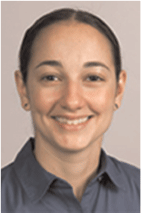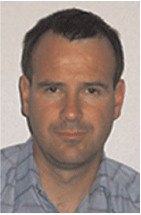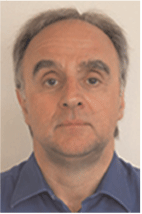Rift processes in the Westralian Superbasin, North West Shelf, Australia: insights from 2D deep reflection seismic interpretation and potential fields modelling
Catherine Belgarde A , Gianreto Manatschal B , Nick Kusznir C , Sonia Scarselli A and Michal Ruder DA BHP Billiton Petroleum.
B University of Strasbourg.
C University of Liverpool.
D Wintermoon Geotechnologies, Inc.
The APPEA Journal 55(2) 400-400 https://doi.org/10.1071/AJ14035
Published: 2015
Abstract
Acquisition of long-offset (8–10 km), long-record length (12–18 sec), 2D reflection seismic and ship-borne potential fields data (WestraliaSpan by Ion/GXT and New Dawn by PGS) on the North West Shelf of Australia provide the opportunity to study rift processes in the context of modern models for rifted margins (Manatschal, 2004).
Basement and Moho surfaces were interpreted on seismic reflection data. Refraction models from Geoscience Australia constrain Moho depth and initial densities for gravity modelling through standard velocity-density transformation. 2D joint inversion of seismic reflection and gravity data for Moho depth and basement density constrain depth to basement on seismic. 2D gravity and magnetic intensity forward modelling of key seismic lines constrain basement thickness, type and density. Late Permian and Jurassic–Early Cretaceous rift zones were mapped on seismic reflection data and constrained further by inversion and forward modelling of potential fields data.
The Westralian Superbasin formed as a marginal basin in Eastern Gondwana during the Late Permian rifting of the Sibumasu terrane. Crustal necking was localised along mechanically-weak Proterozoic suture belts or Early Paleozoic sedimentary basins (such as Paterson and Canning). Mechanically-strong cratons (such as Pilbara and Kimberley) remained intact, resulting in necking and hyper-extension at their edges. Late Permian hyper-extended areas (such as Exmouth Plateau) behaved as mechanically-strong blocks during the Jurassic to Early Cretaceous continental break-up. Late Permian necking zones were reactivated as failed-rift basins and localised the deposition of the Jurassic oil-prone source rocks that have generated much of the oil discovered on the North West Shelf.

Catherine Belgarde is a geologist at BHP Billiton Petroleum. She received a master's degree in structural geology from the University of California, Los Angeles. Before BHP Billiton, she worked as an exploration geologist at ExxonMobil Exploration Company from 2007 to 2013. Her main interest is in understanding the tectonic processes of basin formation and evolution. |

Gianreto Manatschal is a professor at the Institut de Physique du Globe at the University of Strasbourg. He received his PhD in geology from the ETH Zürich, Switzerland, in 1995. After post-doctoral appointments at the Danish Lithosphere Centre and at ETH Zürich (Switzerland), he moved to Strasbourg (France), where he became a professor in tectonics in 2003. His major research interests are in the formation and reactivation of rifted margins in the Atlantic and Alpine Tethys domains. |

Nick Kusznir received his PhD in geophysics from the University of Durham in 1976 and, after teaching appointments at the universities of Durham and Keele, he was appointed professor of geophysics at the University of Liverpool in 1986. At Liverpool, he heads the geodynamic research group, whose research focuses on investigating the structure and formation processes of rifted continental margins. He has initiated and co-led several industry consortium research projects investigating rifted margins, including the iSIMM, MM2, MM3 and MM4 projects. To date he has supervised more than 50 PhD students. |

Sonia Scarselli is a senior structural geologist at BHP Billiton Petroleum, where she leads an integrated team of structural geologists and basin modellers. She received her PhD in geodynamics and structural geology from ETH Zürich, Switzerland, and her MS in structural geology from the University of Perugia, Italy. Her main interest is in the geodynamics and tectono-physics of basins. |

Michal Ruder is the founder and president of Wintermoon Geotechnologies in Denver, Colorado, US. Michal received her PhD in geophysics from the Pennsylvania State University. She applies gravity and magnetic modelling to improve the mapping of crustal properties and structure on local and regional scales. |
References
Chappell, A.R., and Kusznir, N.J. (2008). Three-dimensional gravity inversion for Moho depth at rifted continental margins incorporating a lithosphere thermal gravity anomaly correction. Geophysical Journal International 174, 1–13.Collins, C.D.N., Drummond, B.J., and Nicoll, M.G., 2003—Moho depth patterns in the Australian continent. In: Muller, D. and Hillis, R. (eds), The Evolution and Dynamics of the Australian Plate: GSA Special Publication, 22, 121–8.
Cowie, L., Angelo, R.M., Kusznir, N.J., Manatschal, G., and Horn, B., 2015—OCT structure, COB location and magmatic type of the Northern Angolan margin from integrated quantitative analysis of deep seismic reflection and gravity anomaly data, unpublished.
Goncharov, A., 2004—Basement and crustal structure of the Bonaparte and Browse basins, Australian northwest margin. In: Timor Sea Petroleum Geoscience, Proceedings of the Timor Sea Symposium, Darwin, NT, 9–20 June, 551–66.
Goncharov, A., Deighton, I., Duffy, L., Mclaren, S., Tischer, M., and Herine, C., 2006—Basement and crustal controls on hydrocarbons maturation on the Exmouth Plateau, North West Australian Margin. Search and Discovery Article, 10119.
Goncharov, A., Deighton, I., Tischer, M., and Collins, C. (2007). Crustal thickness in Australia: where, how and what for?. ASEG Extended Abstracts 1, 1–4.
Hall, R. (2012). Late Jurassic-Cenozoic reconstructions of the Indonesian region and the Indian Ocean. Tectonophysics 570–1, 1–41.
Longley, I.M., Buessenschuett, C., Clydsdale, L., Cubitt, C.J., Davis, R.C., Johnson, M.K., Marshall, N.M., Murray, A.P., Somerville, R., Spry, T.B., and Thompson, N.B., 2002—The North West Shelf of Australia – a Woodside perspective. In: Keep, M. and Moss, S.J. (eds.), The Sedimentary Basins of Western Australia 3: Proceedings of PESA Symposium, Perth, WA, 12–18 October, 27–88.
Manatschal, G. (2004). New models for evolution of magma-poor rifted margins based on a review of data and concepts from West Iberia and the Alps. International Journal of Earth Sciences 93, 432–66.
Manatschal, G., Lavier, L., and Chenin, P. (2015). The role of inheritance in structuring hyperextended rift systems: Some considerations based on observations and numerical modeling. Gondwana Research 27, 140–64.
Maus, S., 2009—EMAG2: Earth Magnetic Anomaly Grid (2-arc-minute resolution). Accessed 13 January 2015. <http://dx.doi.org/10.7289/V5MW2F2P>.
Metcalfe, I., 1984—Stratigraphy, palaeontology, and palaeogeography of the Carboniferous of Southeast Asia. Société Géologique de France Mémoire, 147, 107–18.
Metcalfe, I. (2013). Gondwana dispersion and Asian accretion: Tectonic and palaeogeographic evolution of eastern Tethys. Journal of Asian Earth Sciences 66, 1–33.
Myers, J.S., Shaw, R.D., and Tyler, I.M. (1996). Tectonic evolution of Proterozoic Australia. Tectonics 15, 1,431–46.
Péron-Pinvidic, G., Manatschal, G., and Osmundsen, P.T. (2013). Structural comparison of archetypal Atlantic rifted margins: A review of observations and concepts. Marine and Petroleum Geology 43, 21–47.
Pryer, L., Blevin, J., Nelson, G., Sanchez, G., Lee, J.D., Cathro, D., Graham, R., and Horn, B., 2014—Structural architecture and basin evaluation of the North West Shelf, APPEA Conference Proceedings, extended abstract.
Rudnick, R.L., and Fountain, D.M. (1995). Nature and composition of the continental crust: A lower crustal perspective. Reviews of Geophysics 33, 267–309.
Sandwell, D. T., and Smith, W. H. (2009). Global marine gravity from retracked Geosat and ERS-1 altimetry: Ridge segmentation versus spreading rate. Journal of Geophysical Research: Solid Earth (1978–2012) 114, 2,156–202.
Sutra, E., Manatschal, G., Mohn, G., and Unternehr, P. (2013). Quantification and restoration of extensional deformation along the Western Iberia and Newfoundland rifted margins. Geochemistry, Geophysics, Geosystems 14, 2,575–97.
Taylor, S.R., and Mclennan, S.M., 1985—The continental crust: Its composition and evolution. Cambridge: Blackwell.


